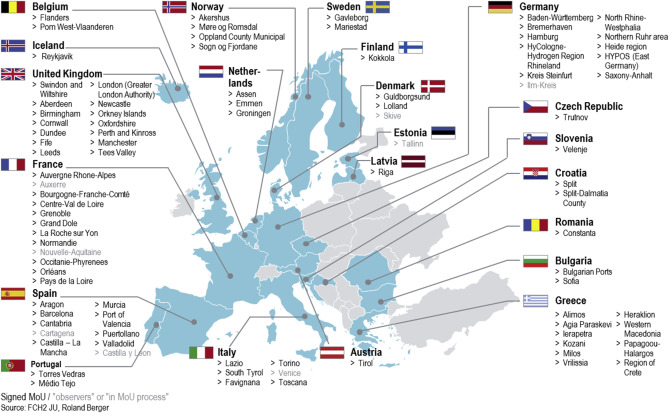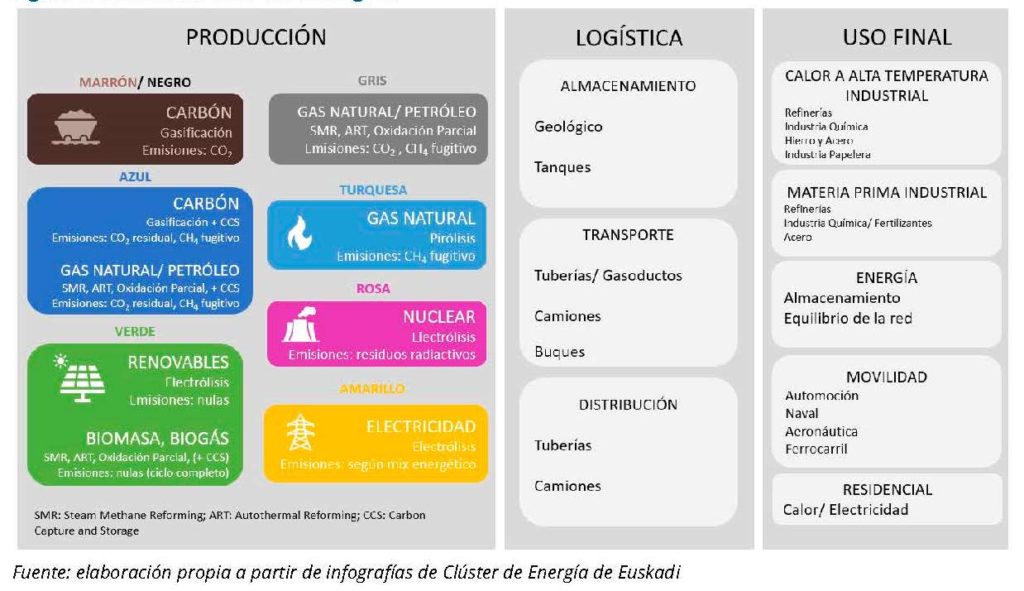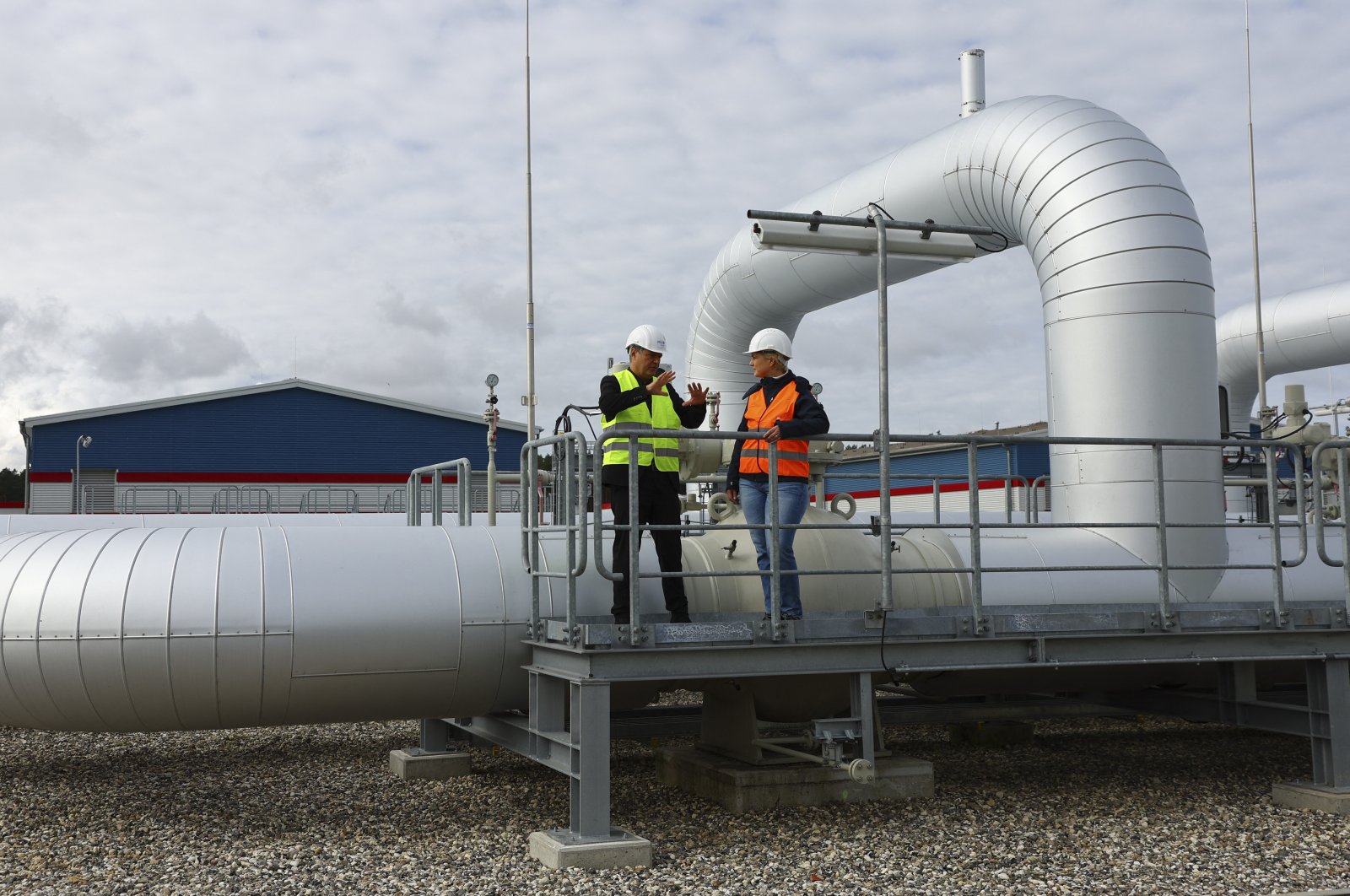The federal government and its regions are committed to green hydrogen.
With an economic stimulus package, the federal government and its regions are committed to green hydrogen both for their own development and in other countries.
Germany has made a strong commitment to developing hydrogen as an energy carrier to decarbonize the economy, as the federal government sees green hydrogen as the only sustainable option in the long term.
As part of the “Future Package” economic stimulus package, Germany’s national hydrogen strategy includes a EUR 7 billion package for the development of green hydrogen technologies and a further EUR 2 billion to promote international partnerships in the hydrogen market.
Adding to these numbers is significant support at the regional level, with many of their regions developing roadmaps and favorable legislation in this area. In this context, in addition to a large volume of private sector investment, there are many programs to finance green hydrogen projects in the country.
Germany and its regions are betting on green hydrogen, although the hydrogen demand in Germany is currently relatively low at around 57 TWh per year (mainly for the chemical and petrochemical industry), but is expected to increase significantly in the coming years, by 2030 90-110 TWh be reached.
The government’s targets include 10 GW of installed capacity in 2030, for which the country is estimated to have to import around 60% of its hydrogen needs, and is therefore making great efforts to develop international alliances.
Hydrogen projects are ongoing
In its value chain, Germany has great potential to become one of the pioneers in the hydrogen sector. In addition to a large number of companies that are already involved in projects in different areas, there is a broad ecosystem of support for the use of these technologies.
These projects are driven by different public and private sectors and cover the entire spectrum of the industry, from technologies for electrolysers, the generation of different types of renewable energy to the production of hydrogen or the decarbonization of industries such as steel, petrochemical or cement.
Projects to build hydrogen transport infrastructure are relevant, as are mobility projects covering virtually any modality, including automobile, marine, rail or air. Most of these projects are led by consortia of large German companies and are mostly focused on research and demonstration.

Potential market for hydrogen
Most of the scenarios considered conclude that hydrogen and derived fuels will account for between 10% and 23% of final energy consumption in the EU in 2050, and the Joint Research Center estimates that in 2050 around 2,000 TWh of hydrogen are needed.
In Germany in particular, the demand for hydrogen is currently around 57 TWh per year, although only 7% of this hydrogen is green.
The Federal Ministry of Economics and Climate expects the demand to increase to 90-110 TWh in 2030 and it is expected to exceed 600 TWh in 2050, mainly driven by the growth of industrial demand until 2030 and thereafter In 2050, transportation is projected to be the sector with the highest demand.
In any case, Germany will not have the capacity to meet its consumption and will be forced to import around 60% of its hydrogen needs.
With that goal in mind, Germany has already started to forge deals ranging from MoUs to energy collaborations and investments for supply with countries outside the EU, including Saudi Arabia, Australia, Chile, Namibia, Canada, Ukraine, Morocco, Abu Dabi, South Africa or Georgia.
How Germany and its regions rely on green hydrogen
Germany has an ambitious decarbonization plan that aims to reduce emissions by 65% by 2030 and 88% by 2040 compared to 1990 levels. The country is in the process of dismantling nuclear power plants, because the greater weight of electricity generation depends on renewable energies.
The German National Hydrogen Strategy (NWS) that emerged in 2020 includes the target of 5 GW of electrolysis in 2030 and the installation of a further 5 GW between 2035 and 2040 with an estimated annual production of 14 TWh per 5 GW of installed capacity. Its goals include:
Establish hydrogen technologies as central elements of the energy transition in order to decarbonize production processes with the help of renewable energies.
Creation of regulations to accelerate the market for hydrogen technologies.
Strengthening of German companies and their competitiveness through research funding.
The development and export of technology related to innovative hydrogen technologies and to secure and shape the future national supply of CO2-free hydrogen and its derivatives.
In addition to the national strategy, several of the 16 German state governments have developed hydrogen roadmap strategies.
These include Baden-Württemberg, Bavaria and North Rhine-Westphalia. In addition, the northern coastal regions (Bremen, Hamburg, Mecklenburg-West Pomerania, Lower Saxony and Schleswig-Holstein) have established the HY-5 Green Hydrogen Alliance with the aim of making northern Germany the future leading green hydrogen region. in Europe and complete the green hydrogen value chain.
H2Global financing platform abroad
In December 2021, the Federal Ministry of Economics and Climate Protection (BMWK) approved an allocation of 900 million euros for the financing instrument called H2Global.
It is a public-private platform to support investments for the production of renewable hydrogen in countries outside the EU, from which the hydrogen is then imported into the EU via a dual public auction mechanism.
In this system, hydrogen is purchased via a 10-year supply contract at the lowest price outside the EU. The purchased hydrogen will then be sold in another short-term auction to European and German companies with the aim of decarbonizing their processes.
This platform will be responsible for channeling the subsidies intended to offset the differential costs between buying and selling hydrogen.
The purchase and sale of PtX products is processed through the intermediary HINT.CO (Hydrogen Intermediary Company), a privately owned subsidiary of the H2Global2 Foundation. In the event that HINT.CO has to absorb losses, these will be covered by the German government via CfDs for the first 10 years.

hydrogen value chain
The hydrogen value chain is divided into the three pillars of production, logistics and end use. Among the predominant sectors where the introduction of hydrogen appears most viable at present are the chemical and petrochemical industries, traditional users of hydrogen.
However, this sustainable fuel is required to provide great support in the most diverse industries to produce heat at high industrial temperatures (in refineries, chemical industry, iron and steel industry or paper industry) as an industrial raw material (in refineries , chemical industry, fertilizer, steel), in energy for storage, in mobility and in residential buildings (to produce heat and electricity).
As an engineering company for innovative combustion technologies and because of its experience in this field, E&M Combustión offers consulting, design, manufacture and commissioning of hydrogen burners and hydrogen combustion systems in power generation plants and in industrial processes.
Precisely because of their relevant role in the energy transition, E&M Combustión’s hydrogen burners are already being used in chemical and petrochemical plants, enabling higher boiler efficiency and reduced emissions.
READ the latest news shaping the hydrogen market at Hydrogen Central
The federal government and its states are committed to green hydrogen, July 7, 2022




